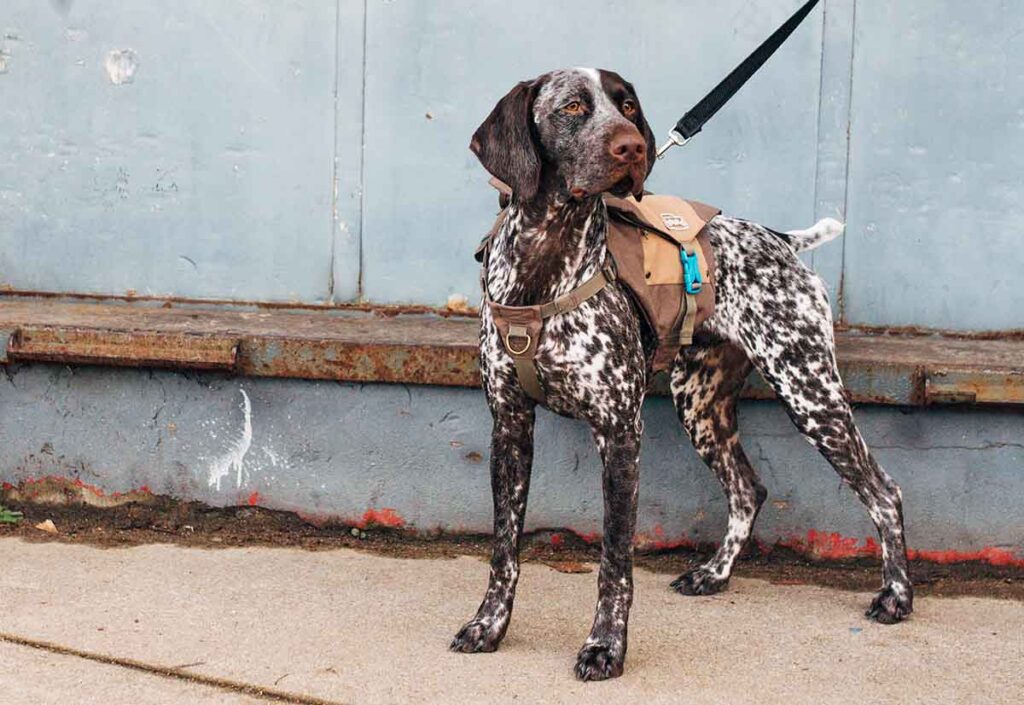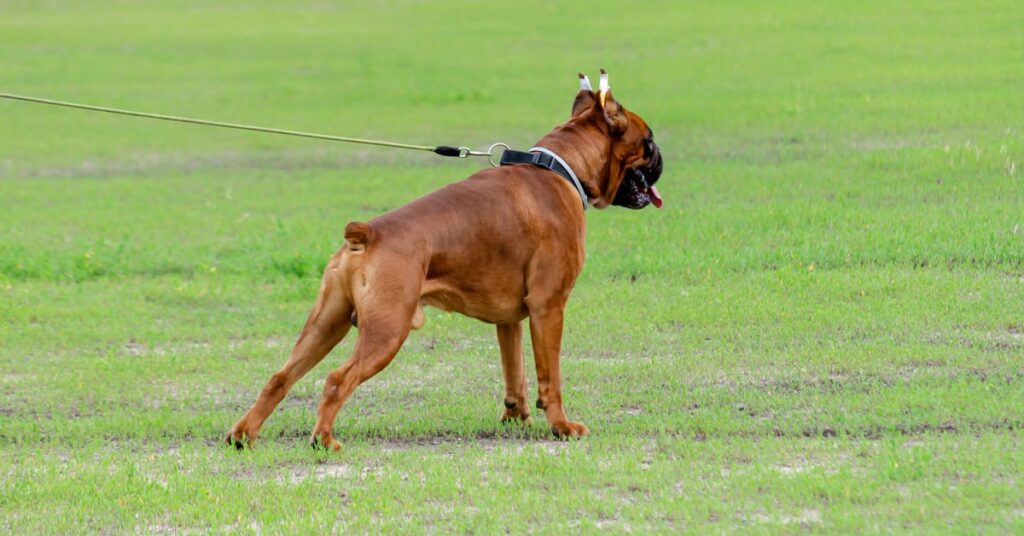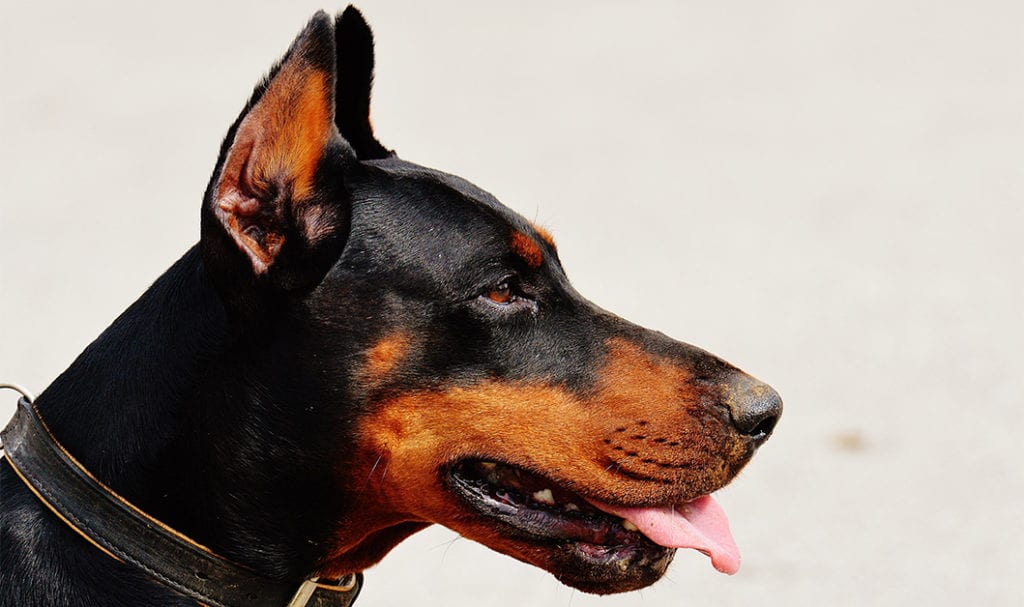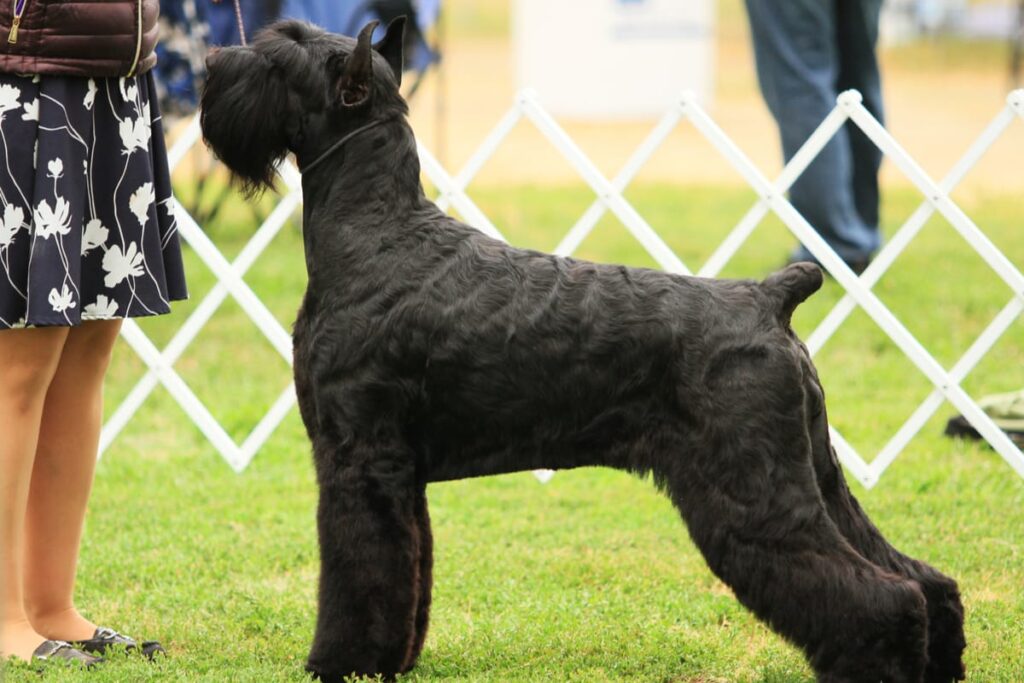In recent years, the topic of ear cropping has been raised as a subject of concern for animal welfare reasons. If you’re a dog owner, you have likely heard about or seen cropped ears in certain breeds of dogs. Great Danes, Schnauzers, cane corsos, pit bulls, boxers, and Doberman pinschers often have cropped ears.
Many organizations, veterinary professionals, and local jurisdictions oppose cosmetic procedures on pets, arguing it is not medically necessary. In fact, the official position statement of the American Veterinary Medical Association (AVMA) is that it opposes both ear-cropping and tail docking of dogs when done solely for cosmetic purposes.
The Canadian Veterinary Medical Association also opposes this practice, as do many other animal welfare groups around the world.
Additionally, Quebec will ban animal cosmetic procedures altogether this summer. The practice has been banned in the UK since the 2006 Animal Welfare Act. It’s illegal in Australia as well.
The American Kennel Club (AKC), on the other hand, states that ear cropping, tail docking, and dewclaw removal are all acceptable procedures to define and preserve ‘breed character’ or for enhancing good health.
So which is it? Is ear cropping an unnecessarily cruel cosmetic procedure or something that is necessary to preserve ‘breed character’?

The History of Ear Cropping
Ear cropping was originally performed on certain breeds of dogs that were considered working dogs. The idea was that if a dog might need to fight or hunt as part of his ‘job,’ then floppy or droopy ears could be a liability. Those ears are an easy target for another animal to grab and tear.
For that reason, ear cropping was seen as something helpful for working flock defense dogs, like certain breeds of shepherds, in the event they encountered and engaged with predators like wolves. Of course, it was also something that was done for less noble purposes like dogfighting and bear-baiting. The latter involved forcing dogs to fight a chained bear.
The practice of cropping a dog’s ears has been performed since the time of the Romans around 2,000 years ago. The Romans also practiced tail docking as it was thought that would decrease the spread of rabies (it doesn’t).
They also cropped dogs’ ears for dogfighting. Some 300 years ago, it is mentioned in texts, along with spiked collars, as a form of defense against wolves.
Another reason given for cropping dogs’ ears is to decrease certain health risks like hematomas or ear infections. It is argued that those droopy ears make it harder to keep the ear canal clean. And if a dog shakes his head and droopy ears vigorously, he can easily tear the skin of the ear away from the cartilage, which then forms a pocket that fills with blood. That’s known as a hematoma.
As you can see, these cosmetic procedures have a long tradition and various initial justifications. But how is ear cropping done, what is the controversy about, and what are the potential complications?

How Is Ear Cropping Performed?
In the past, an older, expert shepherd would perform the ear cropping procedure using an ordinary blade that was also used to shear sheep. It was typically done when a puppy was about 6 weeks old.
They would cut them into a point or make them more rounded, much like a bear’s ears. Those early shepherds took it a step further, however, because they grilled the removed auricle (ear flap) and fed it to the puppy.
They believed that feeding the dog his own ears would make him more aggressive. There was another method they used that involved twisting the ears off of newborn puppies. This would leave the puppy with almost no external ear.
Ear Cropping & Tail Docking Procedures Today

Nowadays, the modern surgical procedure is known as cosmetic otoplasty, and it is considered elective surgery. In other words, there’s no medical need for it to be done.
It is performed when a puppy is between 7 and 12 weeks of age. It becomes more painful if done when the dog is older.
The procedure itself involves removing a portion of the pinnae, which is just the technical term for the flap of the ear. Typically, approximately 2/3 of the ear flap is removed. Once that’s done, the edges of the wound are closed with sutures.
After the surgical procedure is done, the ears are bandaged so that they will heal into the desired shape. The puppy doesn’t feel anything during the procedure because the veterinarian uses general anesthesia. However, postoperative pain can be quite severe and may require pain medication.
Tail amputation/tail docking is done when a puppy is between 2 and 5 days of age, without anesthesia. The dog’s tail is simply cut off with a pair of scissors. Alternatively, some breeders of hunting dogs (who don’t go to a veterinary surgeon) may tie something around the puppy’s tail to occlude the blood supply which then causes the tail to die and fall off.
AKC’s Defense

The controversy regarding ear cropping revolves around the pain it causes a dog in the post-operative period. For the past 100 years or so, the procedure has really only been performed for cosmetic purposes.
The AKC, however, considers calling the procedure cosmetic to be a misnomer. They claim that the label ignores the history and function of purebred dogs that led to the procedure in the first place. Their breed standards include both ear cropping and tail docking as part of “preserving breed character.”
The AKC also insists that working dogs in our modern world, such as those serving in the U.S. military, in police departments, and with Homeland Security, are safer when these procedures are performed.
They argue that the welfare of the breed, as well as the function it was bred to perform, are important reasons for these cosmetic surgeries.
On the other side of the argument are the pet owners and veterinary professionals who feel the procedure is no longer necessary, and because it causes pain, it should be banned. They see it as a form of animal cruelty.
It’s argued that surgeries done on animals for cosmetic reasons, including cropping, docking, and dewclaw removal, are no longer necessary. They also point out that many breeders and other amateurs will often do the procedure themselves, sometimes with disastrous results.
Complications with Ear Cropping

With any kind of surgical procedure, there is the possibility of complications, and ear cropping is no exception. It’s always possible that a dog can have an allergic reaction to the anesthesia. Some of those can be so severe that they are fatal.
Additionally, since ear cropping procedures are done before the dog is old enough to get their vaccinations, they can be exposed to the risk of contracting fatal diseases like parvovirus or distemper.
It’s also possible that ear cropping can psychologically and socially affect a puppy too.
Dogs use their ears to communicate. Erect, cropped ears are a sign that other dogs can interpret as aggressive body language. That could cause a dog to get in more fights than he otherwise would. That also increases his risk of injury and the need for a trip to the DVM.
What Is the Controversy About Tail Docking?

Tail docking advocates claim that puppies don’t really register the pain given that the procedure is done at such a young age. If you ever have observed this procedure, however, the puppy does yelp and cry out indicating it does, in fact, feel the pain.
Additionally, there is a risk of infection and other complications. The tail isn’t normally bandaged, and if it is, the bandage doesn’t last long. That leaves an open wound susceptible to bacterial contamination, particularly since it is close to the anus.
Another potential complication is the development of a neuroma. A neuroma is a thickened, firm lesion of neural — or nerve — tissue. It’s often strangely colored, hairless, and painful. It can develop in the area where the tail was docked.
Advocates for the procedure also argue that dogs have no real need for their tails. Though many experts point out that dogs do use their tails for balance and communication of certain emotions.
Research Regarding Dog Cosmetic Surgeries

While there have been some complications associated with ear cropping and tail docking, there have been no scientific studies that have been able to demonstrate any medical value for both cropping and docking.
One study did show that cropping and docking alter the perception people have of the dog breeds.
Specifically, dogs whose ears are cropped and tails docked are viewed as being more aggressive, dominant, and less playful and attractive than the same breed in its natural state. That could have significant implications for breed-specific legislation.
Regarding tail docking, the Animal Legal and Historical Center at Michigan State University notes that no serious, scientific study has been conducted on whether the benefits claimed for the procedure are valid.
Moreover, there’s a lot of inconsistency regarding supposed hygienic benefits. Collies and Afghans have an even greater potential for ear and tail hygiene problems than Dobermans, Rottweilers, or Boxers. Yet, these dogs are normally not cropped or docked.
The Problem with AKC’s Argument

Regarding breed standards, the problem with the argument that cropping and docking are means to preserve breed character is that humans are the ones choosing the breed characters. This is not the natural state of the breed nor is it a characteristic that dogs can pass on to their offspring.
Rather, cropping and docking are breeders’ choices. And if these procedures are banned, it wouldn’t affect a breed’s natural characteristics in the least.
The idea that a breed would disappear if the procedures are banned is not scientifically sound and is based on a misconception of how evolution operates. Pedigreed dogs are, essentially, man-made.
Some tail-docking advocates have also made the argument that dogs don’t really need their tails for locomotion or communication. While dogs that lose their tails to amputation can and do live full and happy lives, a tail is not just a useless appendage.
It helps a dog balance when walking, leaping, or climbing, and it plays a role in defecation. Additionally, the wagging of the tail helps strengthen muscles in the perineum which, in turn, helps prevent perineal hernias.
Finally, dogs do use their tails to signal certain emotions and intentions, such as playfulness, happiness, and aggression. For that reason, tail docking could have an adverse effect on how a dog interacts with both other dogs and humans.
Final Thoughts

The position statements of numerous veterinary medical associations from around the world have condemned the practice of ear cropping and tail docking as animal cruelty. They find no medical value in the cosmetic procedures and have noted that dog organizations like the American Kennel Club can change their breed standards to reflect the breed’s natural state.
It’s difficult to justify elective surgeries done for cosmetic purposes, particularly when it causes significant pain during the recovery period.
At a minimum, if you choose to have these procedures done on your dog, you’ll want to make sure they are done by a qualified veterinarian, and you’ll want to ask for pain medication to ease any post-operative suffering.

